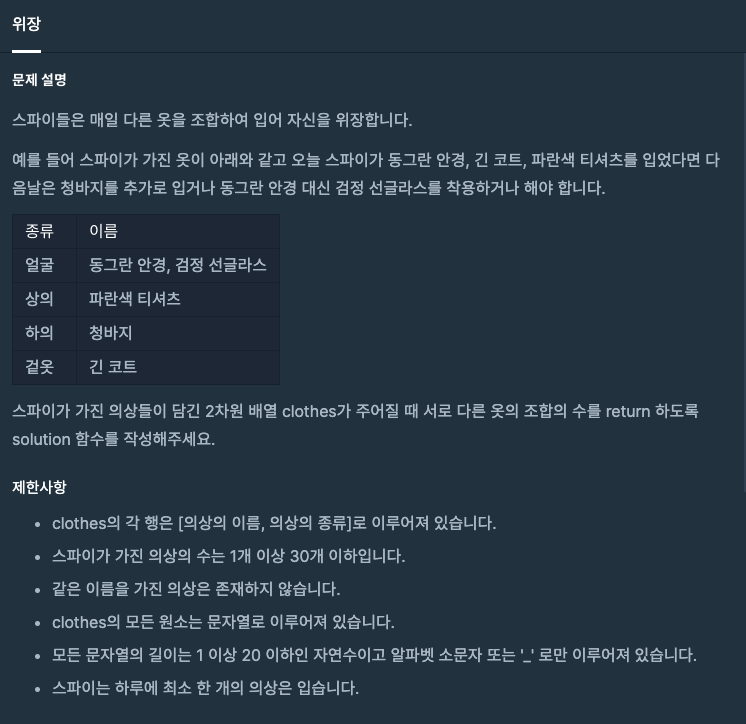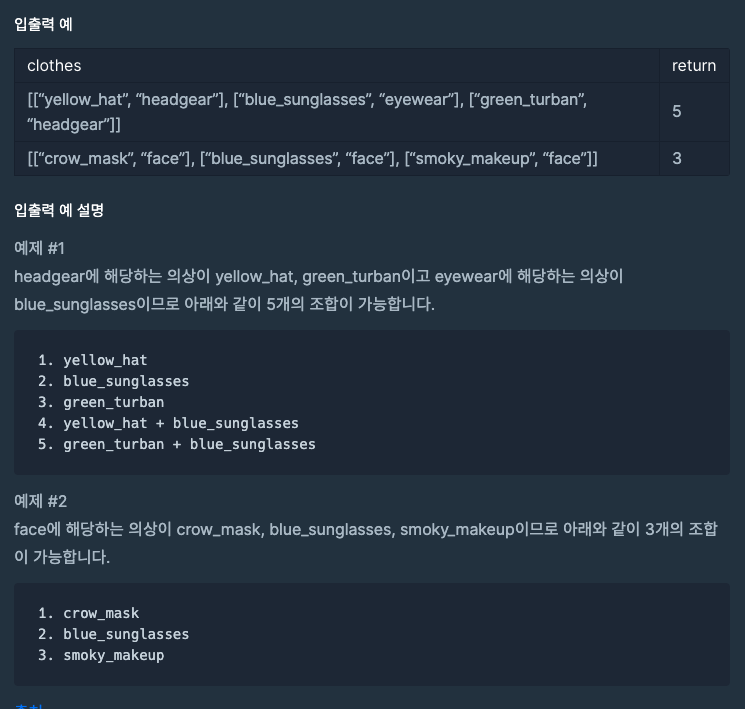[ 내가 푼 코드 ]
#include <string>
#include <vector>
#include <algorithm>
using namespace std;
int combination (int n, int r){
if(n == r || r == 0)
return 1;
else
return combination(n-1,r-1) + combination(n-1, r);
}
int solution(vector<vector<string>> clothes) {
int answer = 1, idx;
vector<int> num;
vector<string> str;
for(int i=0;i<clothes.size();i++)
{
auto result = find(str.begin(), str.end(), clothes[i][1]);
if(result != str.end()){
idx = find(str.begin(), str.end(), clothes[i][1]) - str.begin();
num[idx]++;
}else{
str.push_back(clothes[i][1]);
num.push_back(1);
}
}
for(int i=0;i<num.size();i++)
{
answer *= combination(num[i]+1,1);
}
return answer-1;
}
- 풀이의 원리
1) 각 옷 종류들이 몇개씩 있는지 개수를 카운트 해서 vector에 넣는다
2) 각 종류마다 선택지는 총 (개수+1)개가 있다 --> 선택하지 않는것도 포함
3) 조합(nCr)을 이용해서 개수를 구한 뒤 마지막에 1을 뺀다 (아무것도 선택하지 않는 경우)
[ 최적의 코드 ] - map사용!
#include <string>
#include <vector>
#include <map>
using namespace std;
int solution(vector<vector<string>> clothes) {
int answer = 1, idx;
map<string, int> str;
for(int i=0;i<clothes.size();i++)
{
str[clothes[i][1]]++;
}
for(auto it = str.begin();it != str.end();it++)
{
answer *= it->second+1;
}
return answer-1;
}
- map자료형을 쓰면 key값으로 값을 저장하고 바로 개수를 셀 수 있음! (좋다~)
- 어차피 조합을 쓸 때 nC1만 쓰니까 그냥 조합을 안만들고 곱해도 가능함!


